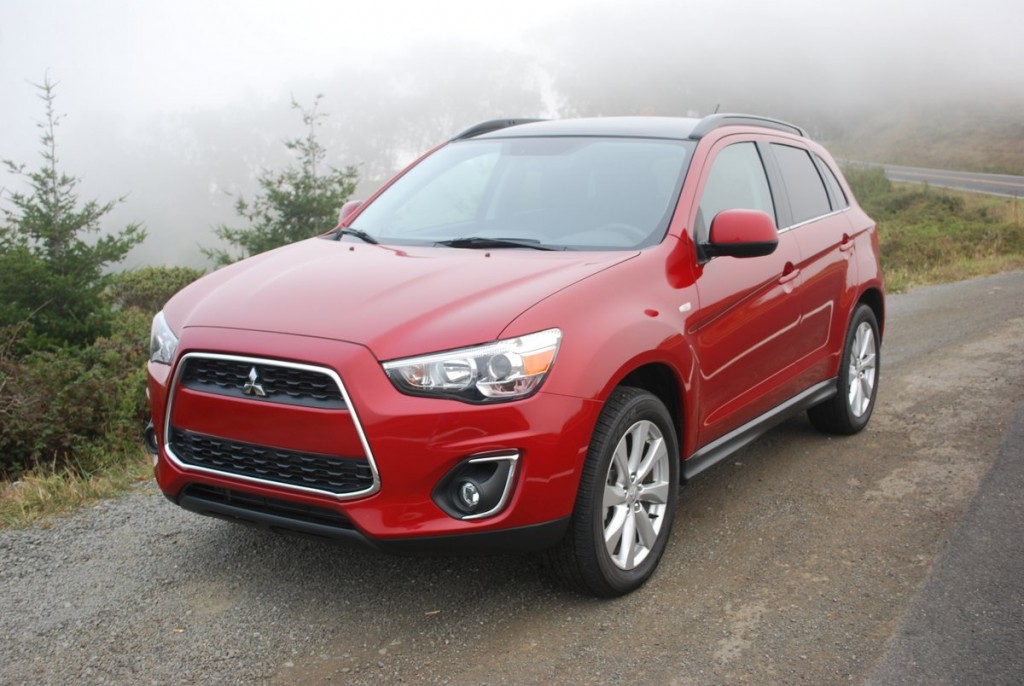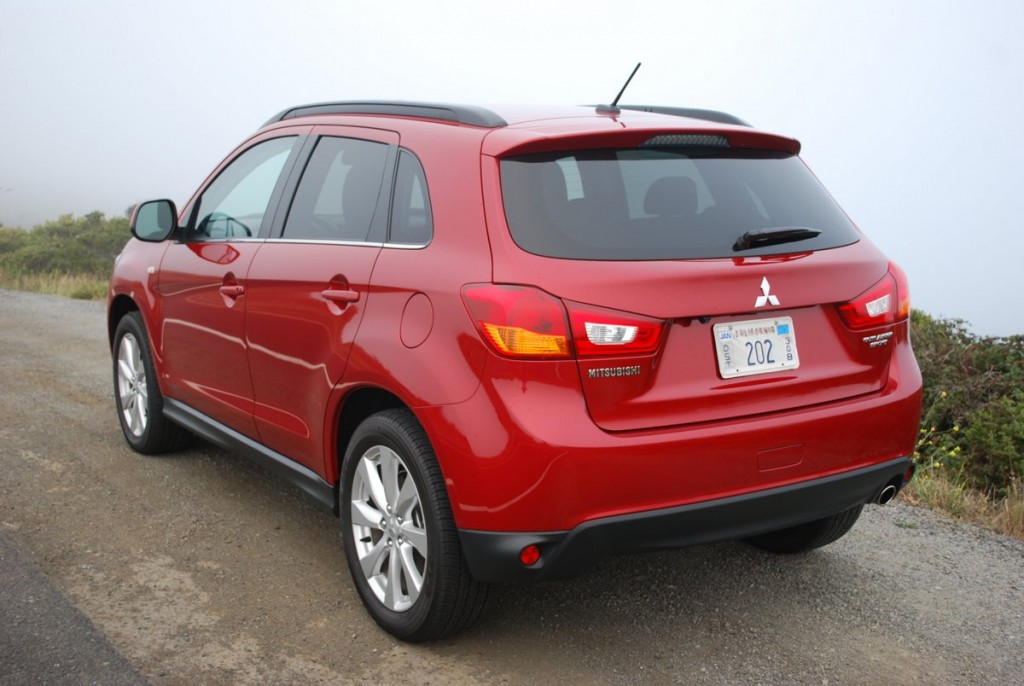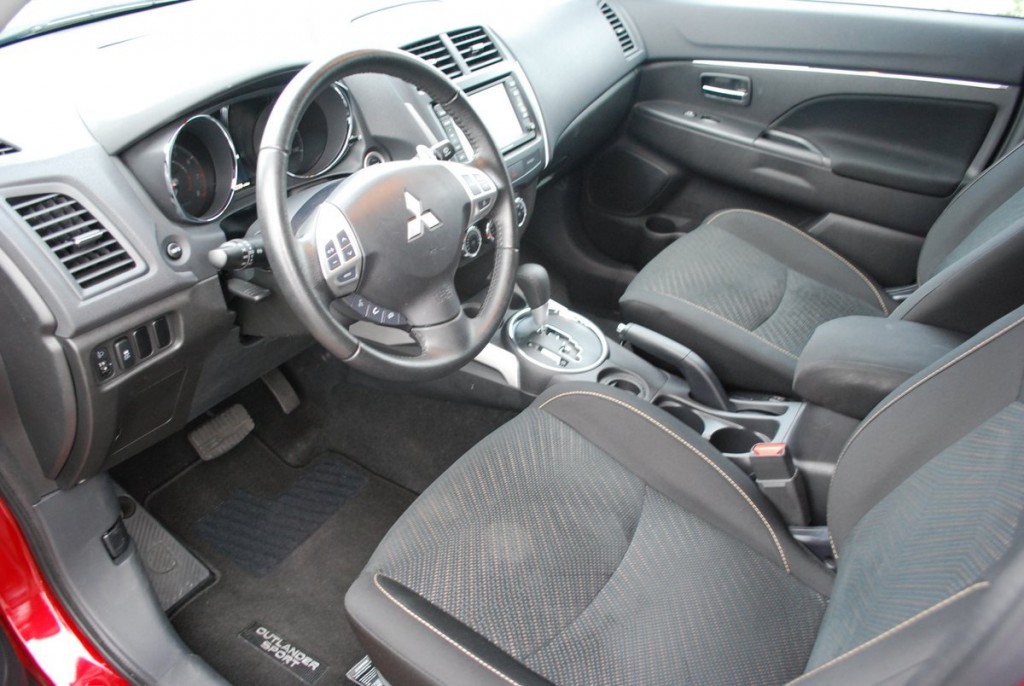Pros:
- The “sport” aspect of this crossover stands out with a nice, tight suspension
- The panoramic roof spans an impressive length of the roof, providing sunlight to both the front and back seats.
- The Outlander Sport boasts a nice stance, looking like it’s prepared for virtually any conditions with aesthetic cues from the iconic Evolution line of rally bred street cars
Cons:
- Underwhelming power – rated at 143hp, but not until 6000rpm.
- The Outlander Sport seems to be plagued by hard plastics and bland designs giving it a cheap interior feel
- Raked rear window and tiny cargo space limits usable volume
“One day. Two Crossovers. Five Guinness World Records.”
I admit to being fully intrigued the first time I saw the commercial for the new Mitsubishi Outlander Sport. Clearly Mitsubishi was having fun with this marketing campaign, but the underlying message that I heard was that this is going to be an exciting, sporty, compact SUV that packs enough performance to make the driving experience stimulating.
With Mitsubishi’s main rival Subaru finding much success with its practical, go-everywhere Forester, it was only a matter of time before Mitsubishi would try to resurrect the Outlander, its competent but much overlooked small SUV. The Outlander Sport hit the media airwaves with a splash, boasting performance that would be comparable to the sportiest crossovers on the market. But is this enough to convince buyers to try a relatively unknown model in this competitive automotive segment?
Driving Impressions
The time I spent in an Evo X last year boosted my respect for Mitsubishi. I knew they made great cars, and the Evo is an icon among enthusiasts. It ended up living up to the hype that was built around it. Coming off my Evo experience, I had high hopes for the Outlander Sport.
Walking around the car, I was thinking, not bad… Sporty angles, nice stance, Evo-esque front end. I climbed in and surveyed my surroundings quickly. Navigation system, proximity key, comfy seats, paddle shifters, huge panoramic glass roof. All good signs that told me that this could be a fun test. It had all the relevant, functional features that you would expect from a $27,575 SUV, including Bluetooth, full front and side airbags, heated seats, and steering wheel controls.
It wasn’t until I started the car and stepped on the gas pedal when reality started to set in. The 2.0 liter MIVEC engine produces 143 horsepower, but not until 6,000 RPM. The continuously variable transmission has 6 preset gear ratios and sporty looking paddle shifters to activate them, but the transmission shifts well before 6,000 RPM. It seems that someone forgot the Sport part of Outlander Sport, at least when it comes to acceleration.
Handling was another story. The suspension seemed well tuned for the younger generation demographic that Mitsubishi is targeting. It’s tight, somewhat firmly sprung, but well damped, providing a decent handling, highly maneuverable feel. The short wheelbase helped to make this a very easy car to drive around town and in tight parking lots. Even on long road trips, I didn’t find the Outlander Sport to be too uncomfortable. I never squirmed in my seat, and I never felt the jolt of bad roads. Overall, the handling was the bright spot.






Won’t they just give up already .Nobody wants Mitsubishi car’s/suv stick to home air conditioner’s .
Mitsubishi is still around and doing well. Maybe not here in the US, but in other parts of the world.